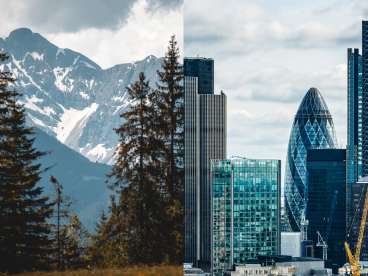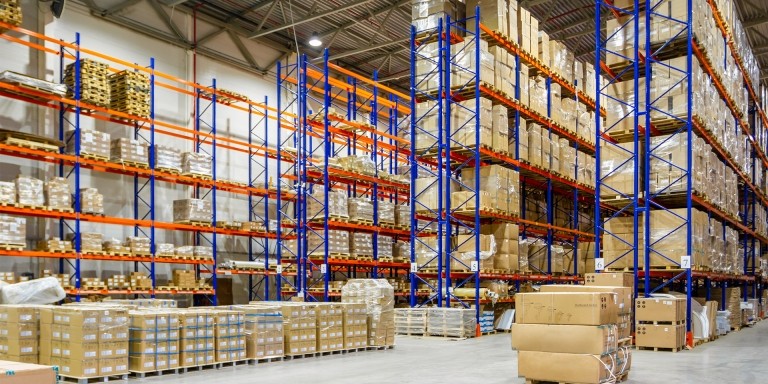Borealis | Carbon Capture Technology: Part of a Solution to Meet Our 1.5°C Climate Target?

The building industry is in a race—we need to cut drastically the global greenhouse gas emissions associated with the buildings we design and build by 2025 to meet our climate targets. It is all the more critical when we know that the population is rising and 70% of the global population is expected to live in cities by 2050, so carbon emissions will balloon. We need to rethink how we design and build to tackle our carbon emissions holistically—we need to focus on whole-life carbon emissions, both operational and embodied.
As a deep green engineering company, Introba has long been diving into low whole-life carbon design, but in parallel, it is also exploring other carbon-solving avenues. What if our buildings could become a net carbon absorber to create useful carbon products such as low Global Warming Potential (GWP) refrigerants, fertilizer to grow food or energy to feed into our district heating networks? There are natural ways to remove carbon dioxide from the atmosphere, like forests and oceans, and they need to use carbon to function properly, but there are also technological means of carbon removal, including direct-air carbon capture, or DAC.
Direct-air carbon capture (DAC) is a chemical or mechanical process isolating carbon dioxide from ambient air. Unlike point-source carbon capture, DAC can be located anywhere, and indeed the first installations of this technology have been in remote areas. Orca, the world’s largest DAC installation, which opened in Iceland in 2021, uses arrays of industrial fans to blow ambient air across a filter and sequester it underground.
Rather than constructing and powering enormous fans in remote locations, what if we could piggyback on existing HVAC systems to transform every building into a carbon absorber?
Innovators are already developing carbon removal technologies that are integrated into building systems. Introba consulted with several of these experts for the first stage of its research. Partnering with a Helsinki-based manufacturer, Soletair Power, along with the UK architect team at Gensler, the joint team tested the theoretical potential of one of these emergent technologies in UK commercial buildings. Soletair Power has pioneered a sorbent-based DAC unit, the first commercial unit installed in Germany last year.
In the first phase of this project, called Inhale, we focused on the carbon captured part and not what to do with carbon once it is captured. (The second phase of the project is called Exhale). The team posed the following questions:
-
Does it truly save carbon over its lifetime (we looked at twenty years) when looking at the CO₂ captured, the embodied carbon impact associated with making, installing, maintaining, and dealing with the end of life of the unit, and its operational carbon (the unit requires electricity to function)? Where is the technology viable?
-
At what cost, now and/or in five years? This technology is not cheap but will likely be reduced by 50% in the next five years.
-
How does it compare against other renewable options such as photovoltaics, standard Direct Air Capture (DAC), and wind?
We found out that the technology has the potential in the future to reduce carbon emissions further when the grid is fully decarbonized and when adding more renewables will no longer benefit the grid.
It’s important to highlight that we need renewables first. The grid should be first decarbonized with renewables before installing these technologies—which gives time to reduce the cost and embodied carbon of the equipment. This technology could be explored in buildings where photovoltaics are not an option because of limited roof area or shading context. The fact that the technology can be widely scalable, only requiring space provision in the plant room, makes it all the more interesting.
The financial impacts also need to be carefully considered. Where photovoltaic panels will become more financially viable if, as expected, utility costs increase, carbon capture will become more expensive to operate. This is a reversal of the carbon impact. When photovoltaics become less beneficial with a decarbonizing grid (although photovoltaics are essential to achieve this), carbon capture will become more beneficial. The final implications of potential productivity gain due to lowering CO₂ ppm concentration haven’t been factored in in this study but could be if thoroughly quantified.
The next phase of the project, or Exhale, will explore the applications of the CO₂ captured, such as a refrigerant identified in Introba's refrigerant best practice guide as a good low GWP refrigerant option, or to create fertilizers for agriculture purposes.
This technical review explores building-integrated carbon capture technology from a whole-life carbon and cost perspective over the next twenty years in the United Kingdom.
Developed in partnership with architects at Gensler and Soletair Power, a manufacturer who produces and installs carbon capture technology, this paper explores this technology's potential now and in the next five years.
Will building-integrated carbon capture be a solution in our design toolkit to help meet our 1.5 °C climate targets?
More About Impact Fund
Related News
-
Jun 7, 2024
-
-
Sep 8, 2023
Meet Our Revamped Leadership Team in Canada
News & Publications






